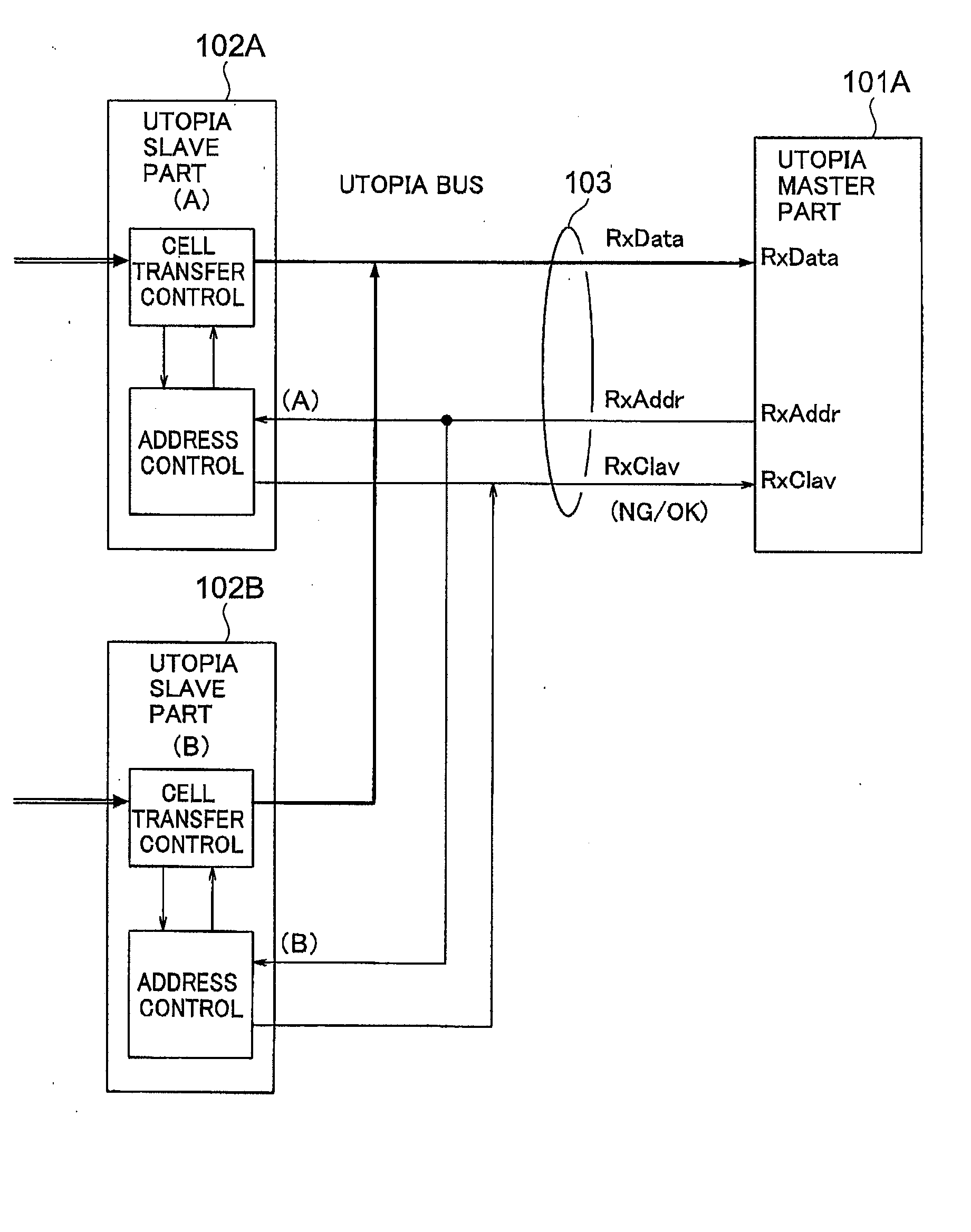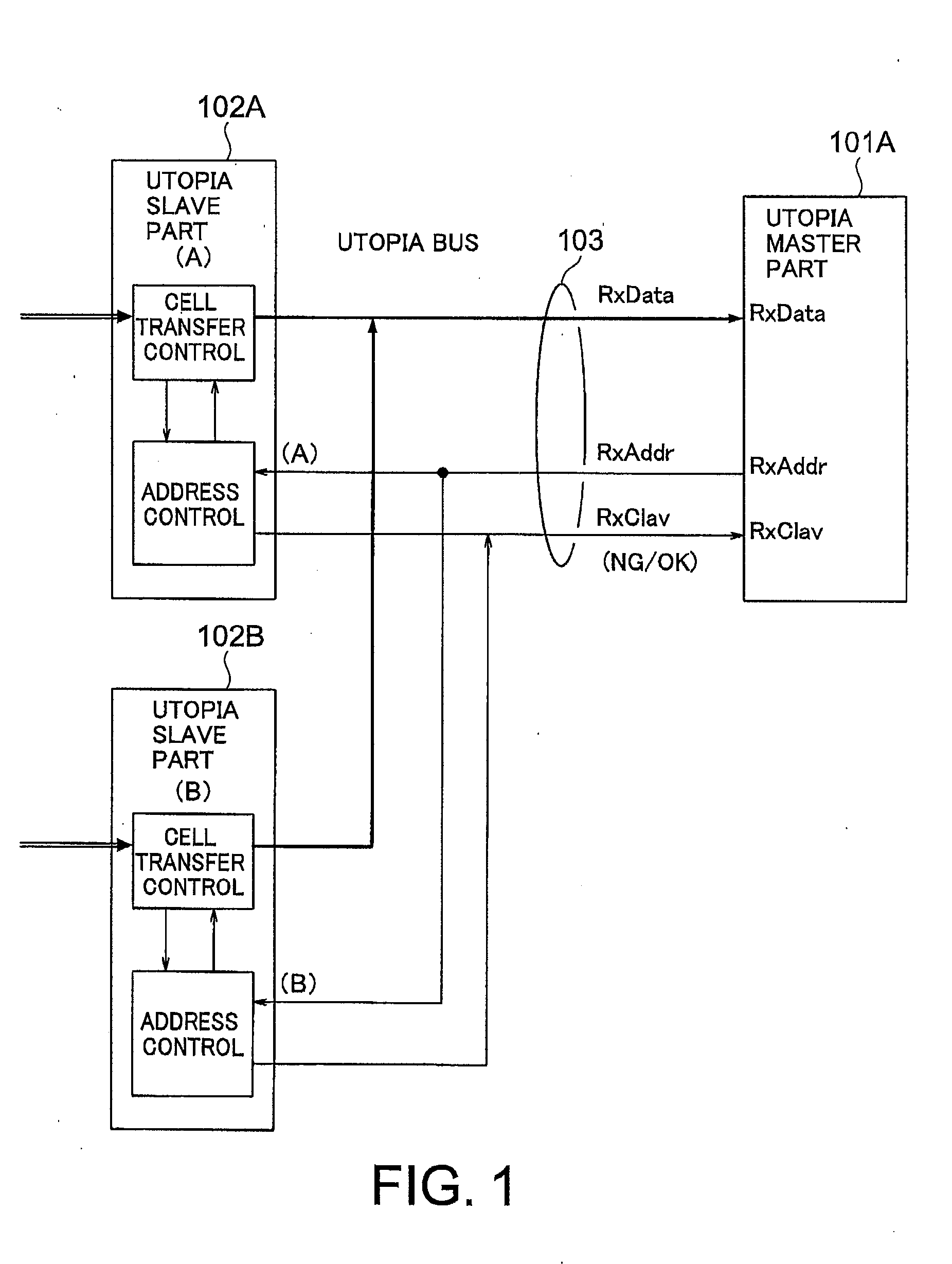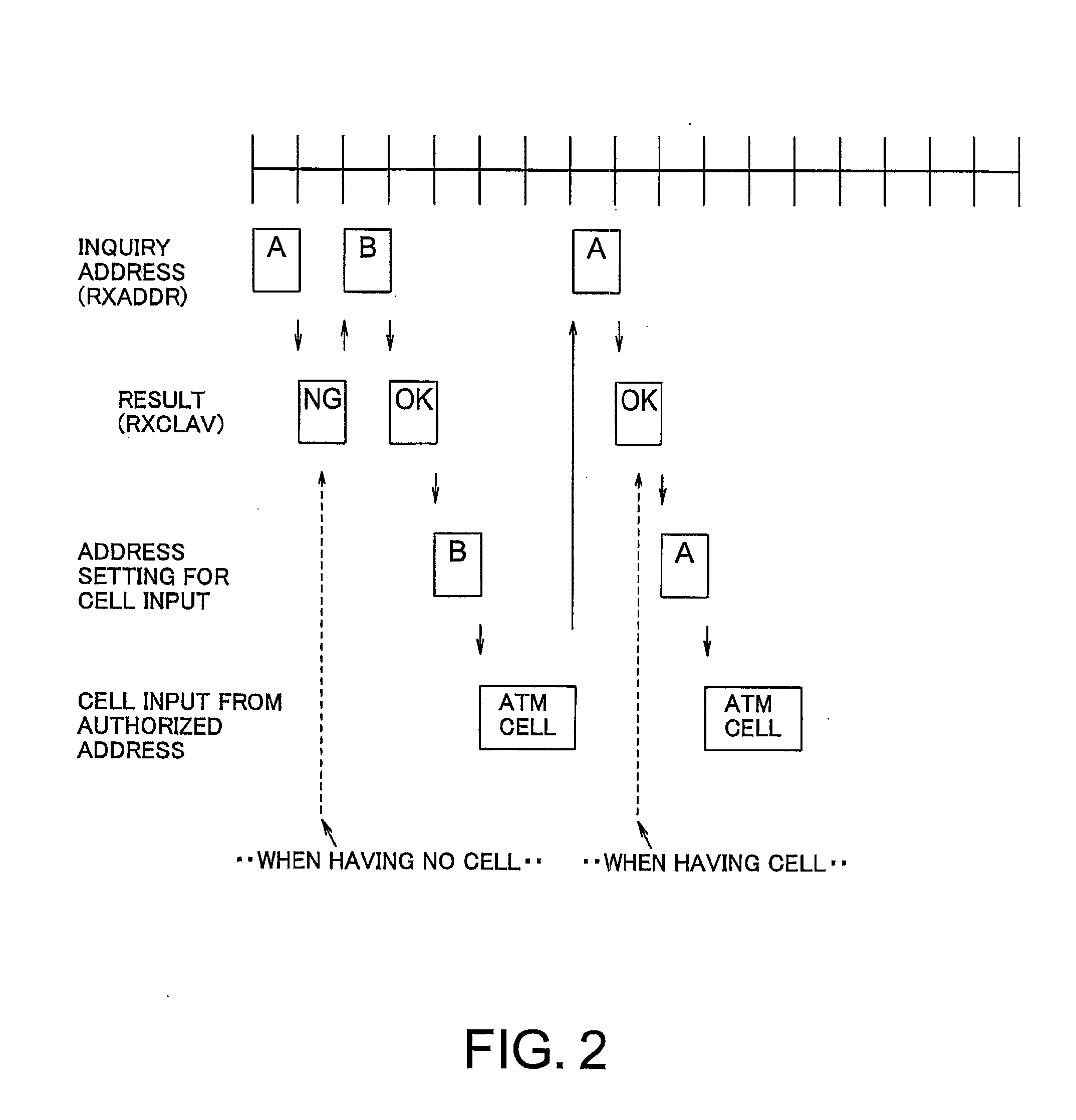Data Transfer Method and System for Use in Atm Communication
a data transfer and atm communication technology, applied in the field of atm communication data transfer methods and systems, can solve the problems of inability to determine the transmission sequence of atm cells stored in different slave parts on the transmission side, and cells stored in the master part in a different sequence, so as to achieve the effect of reliably receiving atm cells
- Summary
- Abstract
- Description
- Claims
- Application Information
AI Technical Summary
Benefits of technology
Problems solved by technology
Method used
Image
Examples
first embodiment
[0042] A first embodiment of the present invention will be described with reference to FIG. 3.
[0043]FIG. 3 is an explanatory diagram illustrating block configuration of a data transfer system for ATM communication according to an embodiment of the present invention. In FIG. 3, a transmission side shelf 1 is connected to a reception side shelf 2 with a plurality of transmission bands.
[0044] The transmission side shelf 1 has one UTOPIA master part (hereafter, referred in short as the master part) 11 formed by an ATM layer processing part, a plurality of UTOPIA slave parts (hereafter, referred in short as the slave parts) 12A, 12B, . . . formed by physical layer processing parts, a UTOPIA bus 13, and an address monitor part 14. The master part 11 and the slave parts 12A, 12B, . . . are connected by the UTOPIA bus 13. The address monitor part 14 is connected to the UTOPIA bus 13 to monitor ATM cells sequentially transferred onto the UTOPIA bus 13 and sequentially read destination addr...
PUM
 Login to View More
Login to View More Abstract
Description
Claims
Application Information
 Login to View More
Login to View More - R&D
- Intellectual Property
- Life Sciences
- Materials
- Tech Scout
- Unparalleled Data Quality
- Higher Quality Content
- 60% Fewer Hallucinations
Browse by: Latest US Patents, China's latest patents, Technical Efficacy Thesaurus, Application Domain, Technology Topic, Popular Technical Reports.
© 2025 PatSnap. All rights reserved.Legal|Privacy policy|Modern Slavery Act Transparency Statement|Sitemap|About US| Contact US: help@patsnap.com



